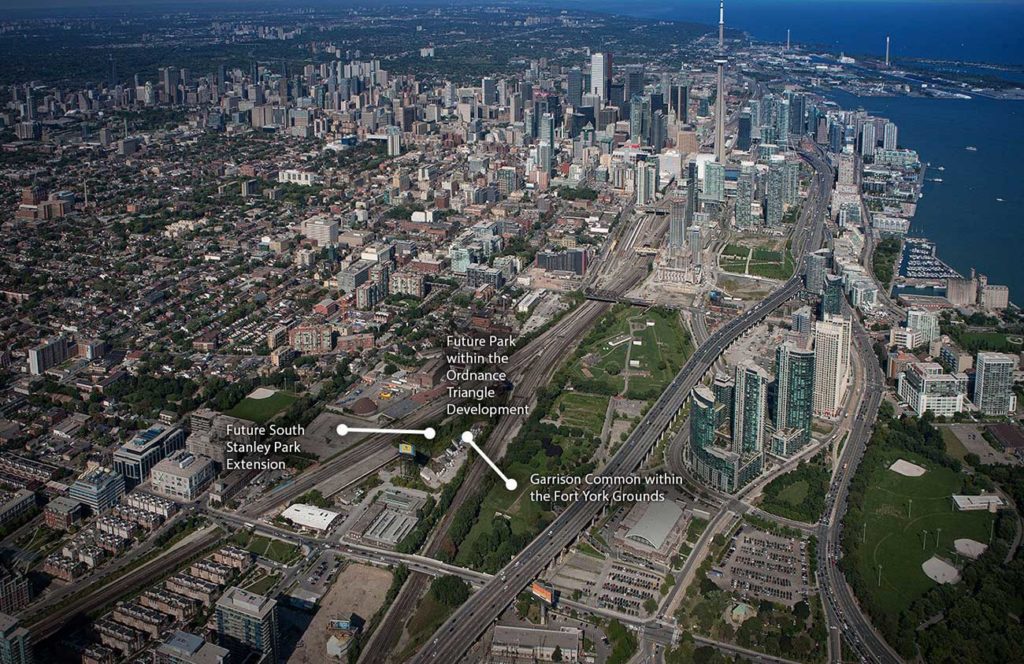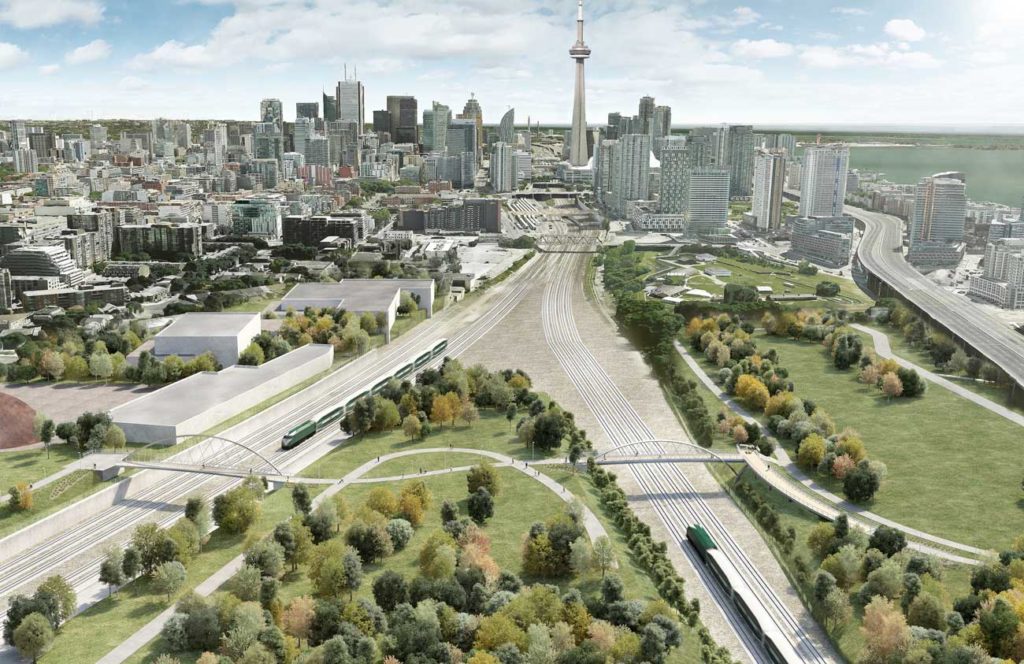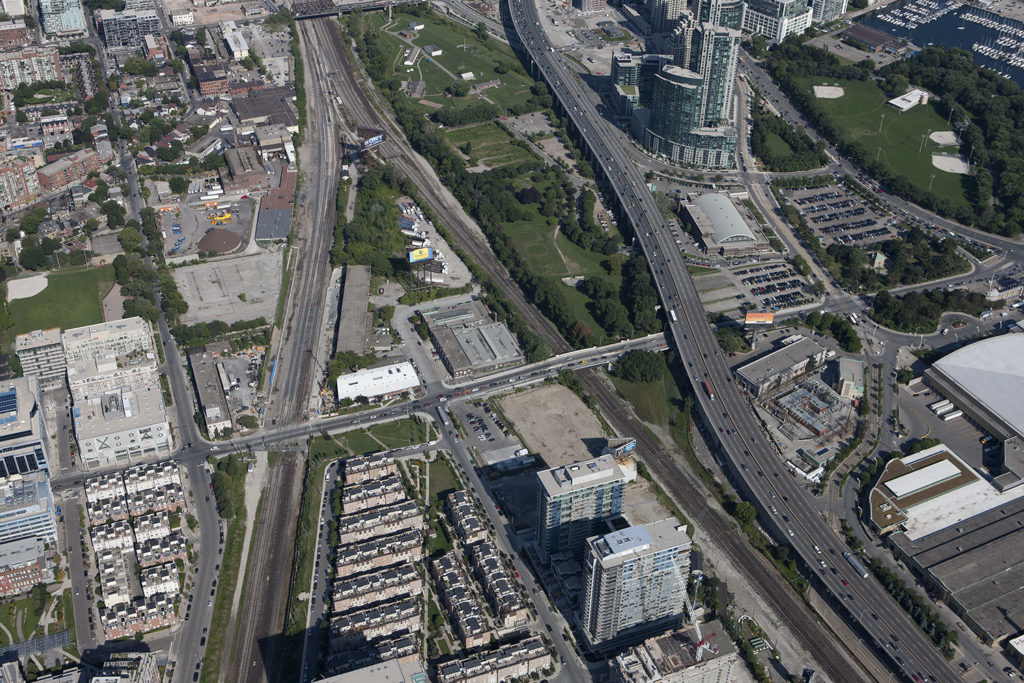The Project
Introducing a new pedestrian and cycle bridge - Garrison Crossing
Project History
As Toronto’s downtown core continues to grow and evolve, the City continues to plan for new ways to enhance accessibility and connectivity around the expanding communities. Aware of the needs for a strong connection around Fort York, in the early 2000’s, the City initiated a project to develop a bridge to allow pedestrian and cycle access from Trinity Bellwoods to the Fort York.


In 2008, a Municipal Class Environmental Assessment (EA) was initiated to determine a concept and design, but the bids for the concept and design exceeded the budget. Unfortunately, without a design that fit the budget of the former Fort York Pedestrian and Cycle bridge, the Garrison Crossing, a key to strengthening the connectivity of the community was at risk of not being built.
In 2012, City Council authorized City staff, Build Toronto (now part of CreateTO) and its development partners to integrate the bridge within the area development. In 2013, Build Toronto (now part of CreateTO) was invited to collaborate with the City on the project. Build Toronto (now part of CreateTO), having expertise in the areas of identifying development opportunities, and in moving City properties from concept planning through to construction, initiated a plan to realize this important connection.


Based on multiple factors such as budget restrictions, local transportation needs, tight timelines, stakeholder engagement, the need for flexibility in design to allow for innovation and a host of other considerations, a nontraditional procurement model was recommended to facilitate optimal design and cost-effective construction.
In early 2014, the Design-Build model was approved by City Council as the best way to ensure that this essential community-enhancing project came to fruition, and they directed Build Toronto (now part of CreateTO) to manage the design and construction. Since the preliminary design concepts and bridge alignment developed by the City in 2008 needed to be altered, the City of Toronto filed an EA Addendum, which was finalized in late 2014.
Build Toronto (now part of CreateTO) then engaged WSP as its project managers. The team advised on the bridge process and had specific rail, structural, design and community planning expertise pertaining to large infrastructure projects – helping to ensure our collective success in this project.
Together, through a prequalification of design-build contractors, a shortlist of three companies was selected to participate in a Request for Proposal (RFP) in December 2014. A comprehensive RFP for the project was sent out to the shortlisted firms in January 2015. Proposals were submitted in April 2015 and a full review and evaluation was undertaken. In November 2015, the project team announced that the Dufferin Construction Company had been selected to design and build the Garrison Crossing.
Design development began in the fall and construction of the bridge started in the spring of 2016 for completion in the fall of 2019.
CreateTO, with its project partners, worked with the City to achieve the highest quality design within the City’s budget so that this vital community connection project could become a reality.
We have used the Design Build Model
Used across Canadian infrastructure markets, the Design-Build model sets an effective platform for undertaking public projects by better leveraging private sector expertise – and provides the structure needed to get large City infrastructure projects off the ground. In this model, the private sector company selected to help deliver the public project, carries more risk and ownership over the completion of the project, than is typical in a City of Toronto run process.
As an example, the Design-Bid-Build model focuses detailed design as the first step, whereas the Design-Build model starts to consider the constraints of the project immediately, as part of its design planning. This allows the Design-Builder the flexibility to determine the appropriate response and detailed design requirements to best deliver the project.
The bridge project we were faced with had many considerations that needed to be integrated right from the beginning, including strict budget and timeline, high-quality design, technical requirements, the need for flexibility over materiality, number of stakeholders involved in previous consultations and surrounding transportation constraints, to name a few.
By focusing on the various project considerations from planning through to development, the Design-Build model best supported the Garrison Crossing project.

